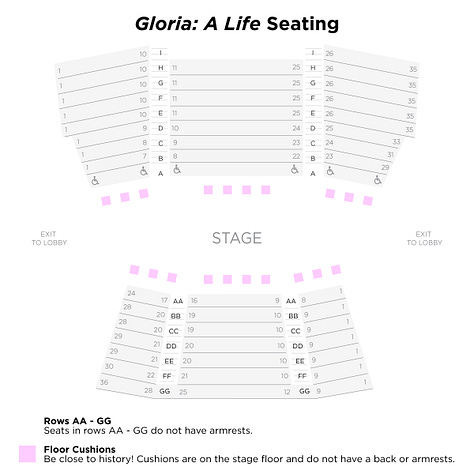Seating
Humans are communal animals.
We're meant to be sitting around campfires telling our stories, learning from each other.
We've been doing it for millennia.So, Gloria Steinem’s opening plea is for a circle.
Some theaters have that modular moveable seating. You could set it up in a circle like this production did at the McCarter. Or you could achieve an almost circle by putting some bleachers on the stage, like at A.R.T.



Most rooms are capable of hosting a great talking circle. A small class of 12-24 students + 1 teacher, perhaps in a room that is 24’x24’, or another rectangle with similar square footage, would be able to achieve three levels of seating and maintain sightlines:
Folks leaning against the wall in the back, or sitting on a desk
Chair sitters
Floor sitters…ideally on a cushion, or in a semi-recline. I can’t think of how they could l…
Keep reading with a 7-day free trial
Subscribe to A Theater-Going Habit to keep reading this post and get 7 days of free access to the full post archives.



